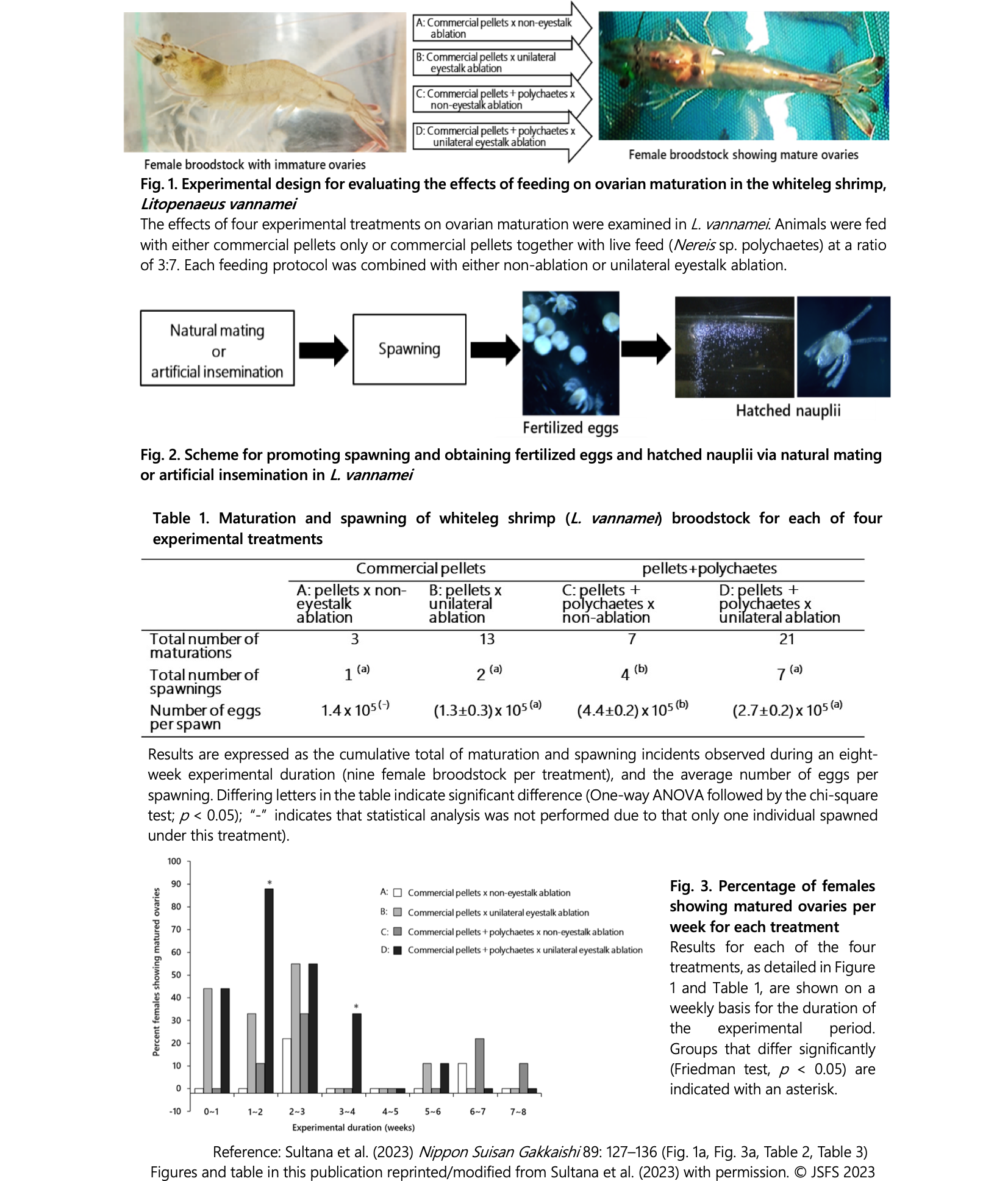Development of a new methodology for controlling maturation in the whiteleg shrimp, Litopenaeus vannamei, using live feeds
Description
In order to ensure the sustainability and profitability of whiteleg shrimp production, it is essential to secure a stable supply of high-quality post-larvae. In this study, it was determined that feeding live polychaetes belonging to the Nereis sp., in combination with commercial pellets, is effective in promoting the induction of ovarian maturation in parent shrimp and increasing the number and frequency of spawning occasions.
Eyestalk ablation is employed worldwide in conventional hatcheries for the purpose of inducing maturation and spawning in female spawners. This methodology is effective because it removes the source of vitellogenesis-inhibiting hormone (VIH), allowing maturation to proceed. However, the eyestalks are responsible for the synthesis/secretion of many other important hormones that control essential life processes; eyestalk ablation thus imposes a heavy burden on the animal. Moreover, in recent years, this procedure has been deemed undesirable from the perspective of animal welfare. The overarching aim of this research is to combine feeding methods and hormonal manipulation to offer an alternative technology to the shrimp culture industry.
Four test groups were set up as shown in Figure 1, and nine female spawners were reared under each treatment. The effectiveness of each treatment was evaluated by following the scheme shown in Figure 2. With regard to the total number of times that maturation occurred in each test group, the eyestalk-ablated groups (B, D) showed a frequency 3.0- to 4.3-fold higher than the non-ablated groups (A, C) under the same feeding conditions. This indicates that eyestalk ablation is highly effective, but when the results are considered by comparison among feeding treatments, the use of live feeds yielded results 2.3-fold higher in group C compared to group A (Table 1). In addition, irrespective of whether eyestalk ablation was carried out, in the groups fed live polychaetes, maturation-inducing effects lasted for a longer duration than in individuals fed only commercial pellets (Fig. 3).
In addition, male spawners were employed for the purpose of implementing natural mating or artificial insemination. In terms of the total number of spawnings, group D (eyestalk ablation/live feed administered) showed the highest number of spawnings, but in terms of number of eggs per spawning, group C (eyestalks not removed/live feed administered) showed the highest values (Table 1).
By feeding female spawners with live feed in addition to commercial pellets, it is possible to enhance ovarian maturation and spawning. This is expected to become a component of a new technology that will replace the labor-intensive process of eyestalk ablation, and thus address issues that relate to animal welfare.
Figure, table
- Research project
- Program name
- Term of research
-
FY2021-2024
- Responsible researcher
-
Wilder Marcy N. ( Fisheries Division )
ORCID ID0000-0003-2114-2000KAKEN Researcher No.: 70360394KANG Bong Jung ( Fisheries Division )
ORCID ID0009-0004-9970-6923KAKEN Researcher No.: 00649022Sultana Zakea ( Fisheries Division )
ORCID ID0000-0003-3712-7390KAKEN Researcher No.: 60995265 - ほか
- Publication, etc.
-
Sultana et al. (2023) NIPPON SUISAN GAKKAISHI 89(2): 127-136https://doi.org/10.2331/suisan.22-00039
- Japanese PDF
-
2024_C02_ja.pdf1.67 MB
- English PDF
-
2024_C02_en.pdf1.04 MB
* Affiliation at the time of implementation of the study.

